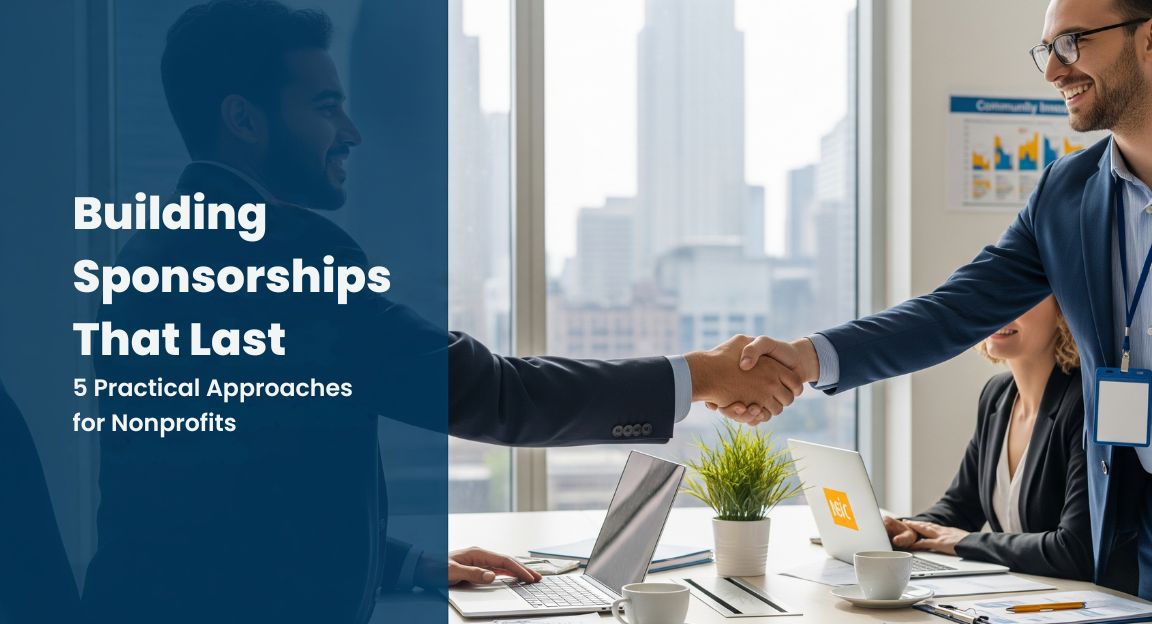

⏰ 8 minutes read
Donor data isn't just names and dollar amounts. It's the little signals donors give you when they open an email, which program they clicked on, whether they've come to an event, how often they give. Use those signals right, and your fundraising stops being guesswork. It becomes a conversation.
Here's a straight, practical playbook for using donor data to get better results, more engagement, smarter asks, fewer wasted mailings.
Segment Donors for Smarter, More Relevant Campaigns
Donors are different. Treating them the same is the fastest route to weak response rates.
Group donors by things that actually matter: how often they give, how big their gifts are, which programs they care about, whether they respond to emails or prefer direct mail. Then send messages that fit those groups.
Simple example: monthly donors get updates that respect their steady support, short notes, impact highlights, and an easy "increase by $5?" option. Lapsed donors? You don't start with "give again." You start with, "Hey, we miss you." Different openings. Different tone. Different asks.
Small change. Big difference.
Personalize Communication to Strengthen Relationships
A donor who gave $50 last year shouldn't see the same ask as someone who's given $5,000. Use giving history to personalize the ask and the suggested amount.
Mention past gifts. Call out events they attended. If someone has clicked through stories about housing programs, lead with an update from that program. The point is simple: show you remember them. Not just the size of the gift, the person behind it.
Personalization doesn't need fancy tech. It needs consistent data hygiene, and a rule set: when X, send Y. When Y, try Z. Repeat.
Analyze Past Campaign Performance to Learn What Works
Data without review is just noise.
Pull these off the shelf: email open and click rates, donation timing, channel performance, which subject lines drove a gift. Compare segments. Ask: did mid-level donors give more after a phone call or an email? Did direct mail outperform for older donors? Did the emergency appeal spike giving for new donors only?
Those answers inform your next plan. Test one variable at a time: subject line, ask amount, channel and keep what works.
Short cycles. Small tests. Learn fast.
Optimize Ask Amounts to Increase Gift Potential
Too big, and you scare people off. Too small, and you leave money on the table.
Use past gifts, cadence and lifetime value to set suggested donations. If someone usually gives $100, try $125 first, not $1,000. If a monthly donor has been on the same plan for years, offer a modest bump. When donors upgrade, thank them quickly and show impact.
Numbers matter, but context matters more. Make the ask sensible for the person, and the response rate will follow.
Incorporate Feedback Loops to Continuously Improve
After a campaign, don't just tally dollars. Ask what donors thought.
Watch the metrics: open rates, unsubscribes, clicks. Ask questions: short survey after a major campaign, or a quick call to top supporters. Use qualitative feedback to spot friction: too many emails? Confusing impact copy? Bad donation form?
Set up a simple cycle: run → measure → ask donors → tweak → run again. Over time, your campaigns get tighter and donors feel heard.
Quick Checklist You Can Use Today
- Segment your donor list into at least three groups (new, repeat, lapsed).
- Personalize the first sentence in every major email.
- Test two ask amounts with a small subset before rolling out.
- Run a short donor survey after a big push.
- Track which channel gives you the best return by segment.
Do those five things and you'll see traction fast.
A Short Note on Tools
CRMs and donor platforms make this simple, if you use them right. Look for systems that let you:
- Tag donor interests and behaviors.
- Automate simple, personalized journeys.
- Pull quick reports on lifetime value, retention, and response rates.
Conclusion
Donor data is more than a record of past gifts, it's the path to deeper relationships, more strategic campaigns, and stronger long-term support. When nonprofits take the time to segment donors, personalize messaging, analyze past results, and continually refine their strategy, fundraising becomes not just more effective, but more meaningful for everyone involved.
Data doesn't replace storytelling or human connection, it enhances both.
How GiveLife365 Helps You Turn Donor Data into Fundraising Power
GiveLife365 gives nonprofits an all-in-one platform to understand donor behavior, customize outreach, and track campaign performance without juggling multiple tools.
With features like:
- Smart donor segmentation
- Personalized outreach automation
- Built-in analytics dashboards
- Predictive insights for optimal ask amounts
- Automated feedback loops and engagement tracking
…it's easier than ever to turn donor data into stronger relationships and more impactful fundraising campaigns.
Want to see it in action? Book a Demo and discover how GiveLife365 can help you build more meaningful donor connections — and boost your fundraising results.
